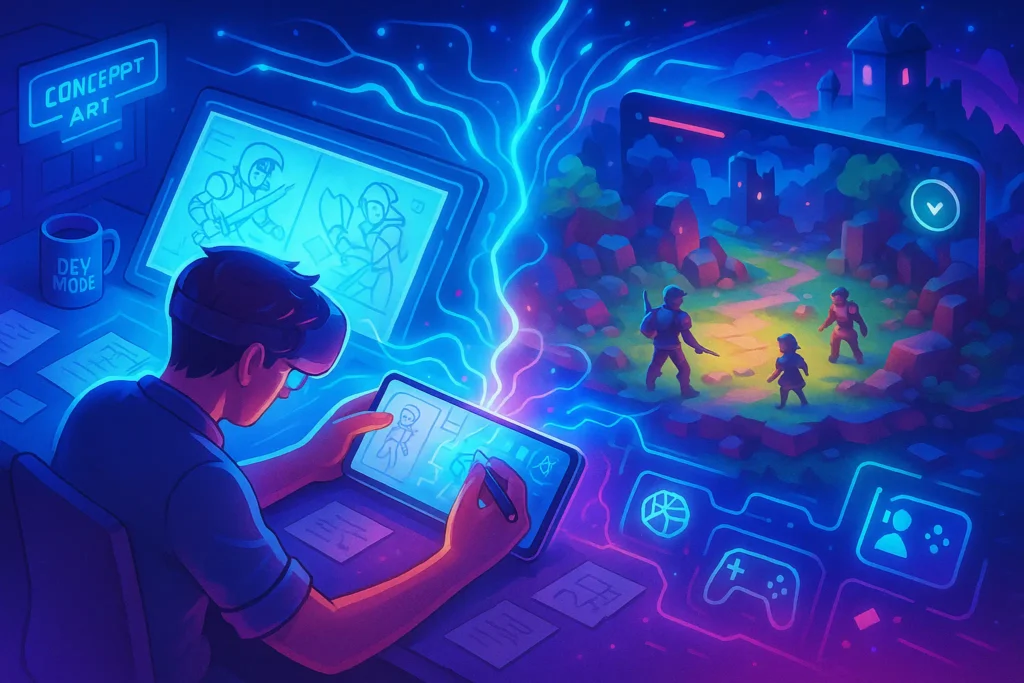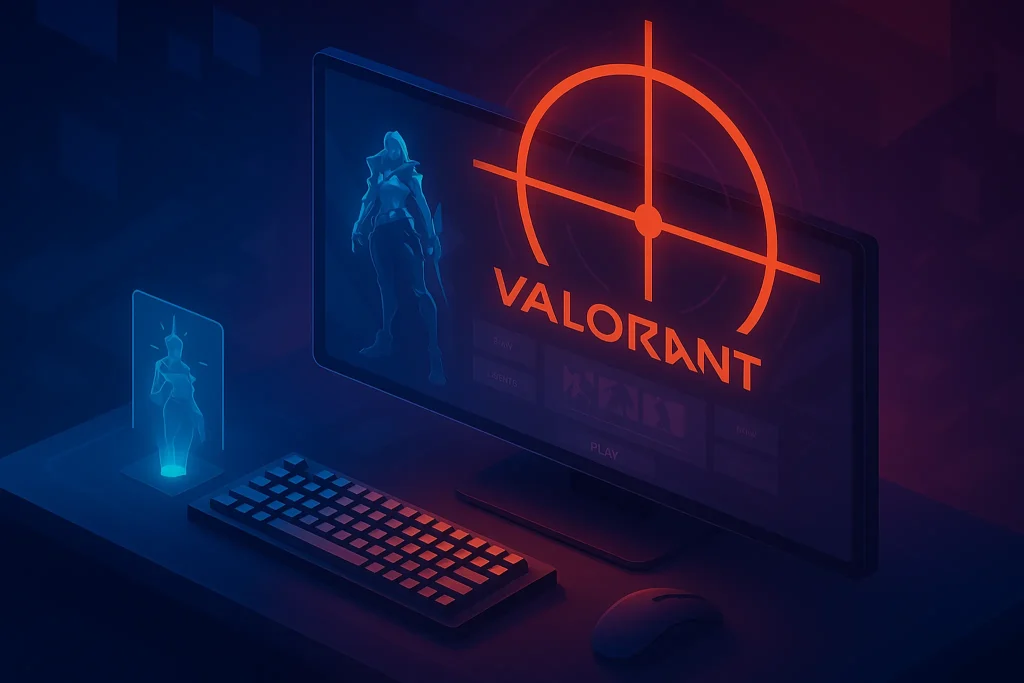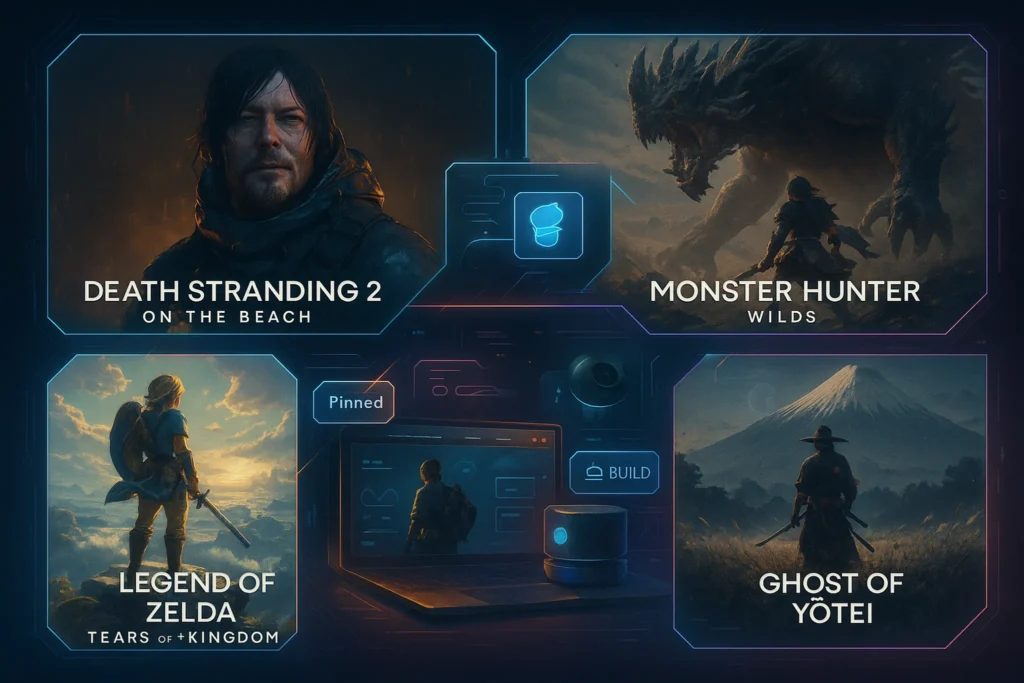-This post may contain affiliate links. If you click on one and make a purchase, I may earn a small commission at no extra cost to you.-
🎮 Introduction: Who’s Really Designing Your Games?
Have you ever wondered if the world you’re exploring in a video game was actually hand-crafted… or generated by code?
Artificial Intelligence is not just helping with minor tweaks anymore—it’s redefining how games are created. From vast procedurally generated worlds to NPCs that adapt to your playstyle, AI is giving developers new creative superpowers. In this post, we’ll explore real-world tools, game examples, and the pros and cons of letting machines co-design your entertainment.
Let’s see how AI is revolutionizing the game design process.
🧠 1. Procedural Generation: Creating Worlds on the Fly
In traditional game development, level designers and artists spend months (or years) building every environment, map, and location manually. But with AI-powered procedural generation, games like No Man’s Sky, Minecraft, and Spelunky can generate billions of unique environments based on a few core rules and inputs.
Advanced AI takes this further: not only can it generate random terrain, but it can also learn patterns, design around narrative logic, and tailor visuals to specific themes.
🔧 Tools Making It Happen:
-
Unity ML Agents
-
Promethean AI (used for smart level design suggestions)
-
GAN-based Map Builders (using generative adversarial networks)
🧪 Use-case:
“Instead of designing each room manually, developers trained AI to generate 1000+ room types with theme coherence.”
The result? Faster prototyping, limitless environments, and more time for devs to focus on creativity.
🤖 2. Smarter NPCs with Behavioral AI
Non-player characters (NPCs) used to follow simple patterns—walk here, say that, shoot when seen.
Today, AI is allowing NPCs to observe, adapt, and even evolve during gameplay. Games like Shadow of Mordor introduced the Nemesis System, where enemies remember your actions, hold grudges, and respond differently each time. In The Finals, AI voices dynamically generate callouts and emotional tone, reacting to what’s happening in the match.
Behavioral AI means that game characters are no longer just scripted—they’re reactive, contextual, and sometimes unpredictable.
This leap in behavior is part of a wider AI revolution in gaming, where machine learning is not only shaping how characters think—but how entire systems evolve.
✅ Micro-UX Prompt:
Imagine an NPC that adjusts to your stealth or aggression style—wouldn’t that make the game 10× more immersive?
This kind of interaction elevates immersion and replayability dramatically.
🎮 3. Dynamic Storytelling with Generative AI
What if game stories didn’t just branch—they adapted live?
Thanks to Large Language Models (LLMs), some game devs are experimenting with AI-generated dialogue, reactive narrative trees, and dynamic quest generation.
Imagine a quest that changes based on your playstyle, dialogue choices, or even tone of voice—this is becoming possible with tools like:
🧠 Tools to Watch:
-
Inworld AI – character personalities with memory & emotion
-
Latitude’s AI Dungeon – open-world narrative generation
-
Charisma.ai – real-time conversation logic for games
These tools allow writers to focus more on high-level worldbuilding, while AI fills in the conversational and environmental gaps.
🎨 4. Game Asset Creation with AI Tools
AI is also redefining how game assets are made—not just how they behave.
From 3D character models to sound effects and HUDs, tools like Midjourney, Leonardo AI, and Runway let solo devs or small teams create AAA-level assets on tight budgets.
Several Indie Games released in 2025 are already using AI tools like Midjourney or Runway to prototype and launch compelling gameplay with tiny teams.
You no longer need a massive art department to prototype a fully playable world. AI can generate:
-
Concept art
-
Textures
-
Dialog voiceovers
-
Ambient music
🧠 Bonus: Tools like Runway’s Gen-2 are already helping teams animate scenes from simple text descriptions.
With generative art and sound, AI has significantly lowered the barrier to entry for indie developers and accelerated creativity.
⚔️ 5. Challenges & Risks of AI-Driven Game Design
While AI brings tremendous advantages to game development, it also introduces a unique set of challenges—technical, ethical, and creative. Without careful oversight, the same tools that accelerate creativity can also dilute it.
🔁 1. Repetitive or Soulless Gameplay Experiences
One of the most common issues with AI-generated content is a sense of sameness. Even if environments look different on the surface, they often follow similar structures and patterns, making the gameplay feel predictable or empty.
For example, in a procedurally generated game with 1,000 planets, players might quickly feel like “everything is just a variation of the same thing.”
This problem occurs when content is created without a guiding narrative or emotional design intent—something AI still struggles to grasp.
⚠️ 2. Ethical Concerns in Content Creation
AI-generated characters and dialogue can sometimes mimic real people—raising questions around consent, likeness rights, and ownership.
What happens if an AI tool creates a character who looks or sounds too much like a real actor? Or if it generates dialogue that contains harmful stereotypes?
There’s also the issue of training data: many generative tools are built on datasets scraped from the internet—often without the consent of original creators, leading to legal and ethical gray areas.
🎯 3. Loss of Creative Control
AI doesn’t always follow the rules. That’s both its strength and its weakness.
Developers who rely heavily on generative AI may find that the output is:
-
Inconsistent with the game’s tone
-
Visually or narratively off-brand
-
Sometimes inappropriate or buggy
Example: An AI might generate a modern sci-fi environment in the middle of a medieval fantasy game—breaking immersion completely.
This makes human review and editing essential when integrating AI into your pipeline.
🧠 4. Risk to Human Creativity
When designers begin to rely too much on AI for ideation and execution, there’s a real danger of diminishing human creativity.
Instead of acting as a co-creator, AI could become the default decision-maker—leading to homogeneity in style, tone, and ideas.
The most successful AI use cases treat it as a creative amplifier, not a replacement. Human vision must always guide the output.
🔍 5. Player Agency and Authenticity at Risk
AI-driven content personalization can be powerful—but it can also lead to over-automation.
If every level, quest, or line of dialogue is generated based on player behavior, the game may start to feel like it’s simply reacting, rather than telling a cohesive story.
Some players might feel that the experience lacks soul or authorial intent—like there’s no “hand behind the curtain.”
Balancing dynamic content with curated storytelling is key to maintaining emotional impact.
💡 Bottom Line:
AI in game design is a double-edged sword. It can accelerate workflows and unlock creative freedom—but it also risks turning design into a numbers game if not properly guided.
The future of game development lies not in replacing humans, but in harmonizing machine intelligence with human imagination.
Despite its promise, AI in game design comes with real risks:
-
⚠️ Repetitive Feel: Many procedurally generated worlds feel soulless or disconnected.
-
⚠️ Ethical Concerns: Using AI to mimic human dialogue, behavior, or likeness can raise major issues.
-
⚠️ Loss of Control: When devs let AI generate too much, they sometimes get unwanted or even offensive results.
AI can be a powerful tool, but without clear constraints, it can generate content that doesn’t align with the game’s tone, culture, or audience.
🎁 Bonus: 5 Indie AI-Driven Games You Should Try
AI tools aren’t just for AAA studios—indie developers are embracing them to create groundbreaking experiences. Here are five AI-powered indie games that push creative boundaries in unique ways:
1. AI Dungeon (by Latitude)
An open-ended text-based RPG where you can do anything—and the AI writes the world around you in real time using GPT-based models.
Why it matters: You shape the story as you go. It’s less about winning, more about infinite narrative exploration.
2. This Girl Does Not Exist
Built using GAN-generated portraits and GPT-written personality scripts, this dating-sim game features AI-generated characters with dynamic responses.
Why it matters: Raises deep questions about identity, agency, and emotional attachment in games.
3. Echoes of Somewhere (by Silver Script Games)
This upcoming narrative game blends classic point-and-click gameplay with generative dialogue and AI-assisted voice acting to create dynamic interactions.
Why it matters: The voice inflection and emotional tone of NPCs shift based on your actions—creating highly personal storytelling.
4. Fractals of Destiny (Prototype)
A tactical strategy game that uses AI to design randomized but balanced battlegrounds based on historical terrain models.
Why it matters: Merges AI-generated map logic with tactical realism.
5. Artifex Machina
Still in development, this solo-dev project uses Midjourney + ChatGPT + Unity ML to build a surreal puzzle platformer, where even the level mechanics shift based on your actions.
Why it matters: It’s a great example of how small teams (or individuals) can create rich, layered experiences using AI co-creation.
📊 AI Tool Comparison Table
Want to understand how different AI tools contribute to game design? Here’s a breakdown:
| Tool | Use Case | AI Specialty | Ideal For |
|---|---|---|---|
| Promethean AI | Environment Design | Procedural + Suggestion | Level Designers |
| Inworld AI | Character Personality | LLM + Emotional Modeling | Narrative Designers |
| Runway ML | Visual Asset Creation | GenAI (Image/Video) | Artists & Indie Devs |
| Unity ML Agents | Gameplay Behavior & Testing | Reinforcement Learning | Game Programmers |
| Charisma.ai | Interactive Dialogue | Story Engine + Context AI | Scriptwriters & Quest Devs |
| Leonardo AI | Concept Art + Assets | Text-to-Image Generator | Concept Artists & Solo Devs |
Use this table as a starting point to explore which AI tools suit your development goals.
🚀 Future Forecast: What Will AI Game Design Look Like by 2030?
As AI continues to evolve, the gap between developer imagination and technical execution will narrow dramatically. Here’s what we might expect in the next 5 years:
🧠 Fully Adaptive Worlds
AI will create not just environments, but worlds that grow with you. Your actions might permanently alter terrain, architecture, or entire cultures in-game—without human scripting.
🎭 Deep Personality Engines
NPCs will have real memory, evolving emotion, and adaptive motives. A bartender who remembers your every choice from 30 hours ago? Totally possible.
🕹️ Personalized Mechanics
Game mechanics may auto-adjust based on your play style. If you’re a stealth lover, AI might lower enemy vision fields and increase terrain cover without you ever tweaking a setting.
💬 Fully Voice-Driven Interfaces
AI-generated voices and real-time speech recognition will make menu navigation, spell casting, or even storytelling completely hands-free and dynamic.
🎮 TL;DR: Games will feel less like products—and more like living, breathing, improvisational experiences shaped around you.
🧠 Nerd Verdict
Artificial Intelligence is not replacing human creativity in games—but it is amplifying it.
By automating repetitive tasks and expanding what’s possible, AI lets designers focus more on vision, emotion, and storytelling. The best games of tomorrow will be born from a collaboration between human intuition and machine intelligence.
This isn’t about choosing sides—it’s about creating experiences we never thought possible before.
❓ FAQ: Nerds Ask, We Answer
💬 Would You Bite?
🎮 If your favorite game was mostly built using AI, would it still feel magical?
Or do you prefer hand-crafted experiences with a personal touch?👇 Share your thoughts—we’re curious where you stand.



